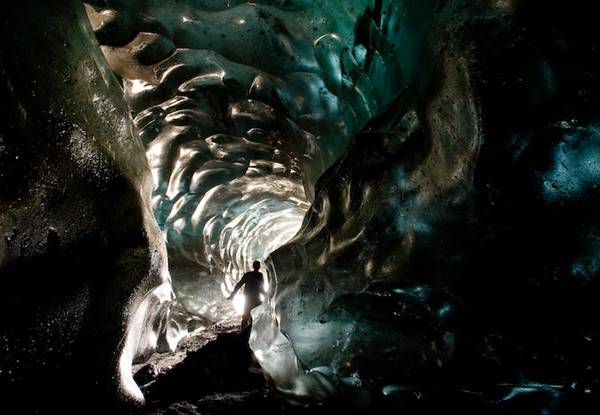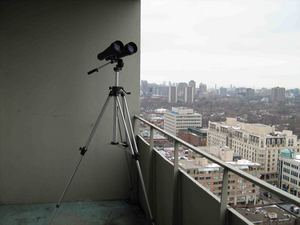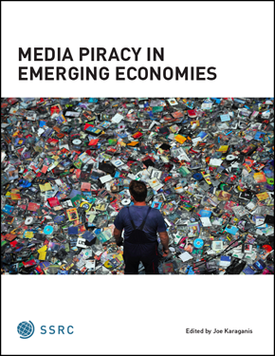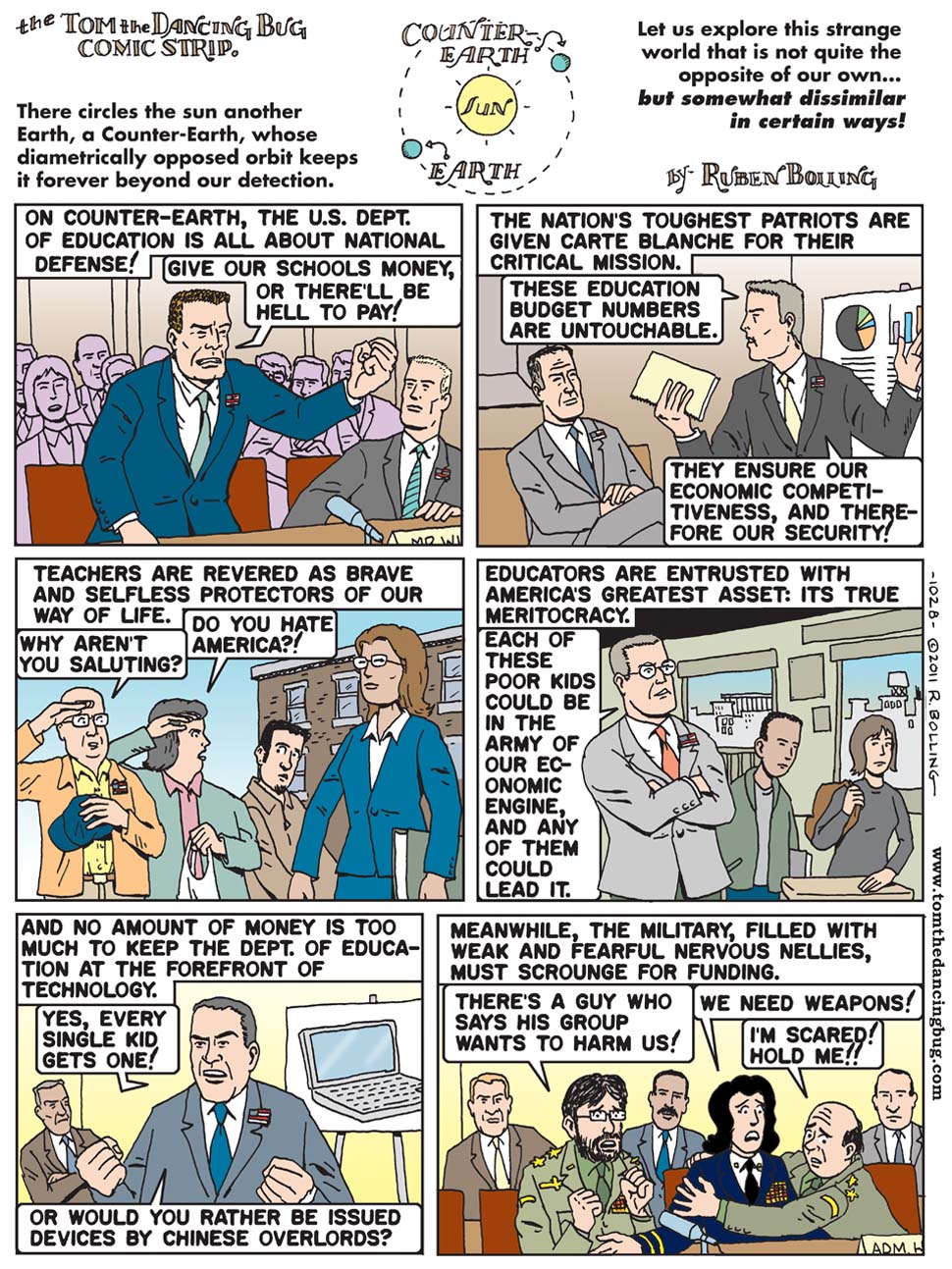The Latest from Boing Boing |  |
- Readers Against DRM (logo)
- Mechanical Turks: a hive of spammery
- BBC newsteam kidnapped, hooded and beaten by Gadaffi's forces
- Slow dust devil lifts plastic sheets off of a strawberry field
- Stereo photographs of 1906 San Francisco Quake discovered
- Dalai Lama announces plans to retire as political leader of Tibetan government in exile
- Live feed from inside Wisconsin Capitol
- Breaking news: Wisconsin GOP passed controversial legislation using backdoor maneuver
- Video game in your browser's location bar
- This is not a plate of nachos: The food magic of Homaro Cantu and Ben Roche
- Hitchhiker's Guide tattoos
- Waterboarding is torture, but not when the U.S. does it
- NYC teen may face 2 years in prison for hamster murder
- 1976 patent for a device to control a television set
- Wondrous, detailed map of the history of science fiction
- Using cams to solve math problems
- Seussian peaks in a can of spackle (photo)
- Zelda: Link's mother gives him what for
- Why HP stole the antique dresser
- Interview with Ted Molczan, citizen satellite tracker
- Photos from the heart of a glacier
- For the Win on Readergirlz
- Consumer's Dilemma: a polemic about economic disparity disguised as a copyright license
- TOM THE DANCING BUG: Counter-Earth's Dept. of Education, Kicking Ass
- SPECIAL FEATURE: Errol Morris: What's in my bag
- What happens to shipping containers lost at sea?
- Web wisdom: Google Before You Tweet
- American Library Association task forces to take on ebook lending
- Stupid, unhealthy diet is stupid and unhealthy
- NPR: Help us figure out which Senator killed Whistleblower Protection
| Posted: 09 Mar 2011 10:51 PM PST  A followup to the Librarians Against DRM logo: Nina Paley has adapted the logo for readers as well. A followup to the Librarians Against DRM logo: Nina Paley has adapted the logo for readers as well. Readers Against DRM (RAD!) (Thanks, Alycia!)
|
| Mechanical Turks: a hive of spammery Posted: 10 Mar 2011 03:36 AM PST Intrigued on hearing that Amazon's Mechanical Turk is increasingly used by spammers, Mark Alen, a UC Berkeley Operations Research PhD candidate decided to see whether he could hire Mechanical Turks to spam him, so he posted an offer to pay for writeups of things to see and do in Shiraz City, France. There is no Shiraz City in France (there is a Shiraz City in Iran, though). This did not deter a flock of MTs who happily wrote fictitious reviews of the good times to be had in Alen's fictitious town: I receive[d] three types of responses:Everybody is spamming everybody else on Mechanical Turk (via O'Reilly Radar)
|
| BBC newsteam kidnapped, hooded and beaten by Gadaffi's forces Posted: 09 Mar 2011 11:42 PM PST A team of BBC journalists in Libya were kidnapped by security forces loyal to the Gadaffis. They were hooded, imprisoned, beaten, and subject to repeated mock-executions. While imprisoned, they witnessed horrific torture of rebels who'd been captured by Gadaffi's forces. One of the three, Chris Cobb-Smith, said: "We were lined up against the wall. I was the last in line - facing the wall.Gaddafi forces beat up BBC team
|
| Slow dust devil lifts plastic sheets off of a strawberry field Posted: 09 Mar 2011 10:35 PM PST [Video Link] Gever Tulley says: "This might just be the most beautiful piece of collaboration between nature and industrial agriculture that I have ever seen." The video gets much better after the first 30 seconds. It reminded me of the transcendental plastic bag scene in American Beauty. |
| Stereo photographs of 1906 San Francisco Quake discovered Posted: 09 Mar 2011 10:17 PM PST  A volunteer at the Smithsonian National Museum of American History has discovered what is believed to be the first, and maybe the only, color photos of San Francisco after the 1906 earthquake and fire that nearly destroyed the city. Photography pioneer Frederick Ives shot the images. They may be the earliest color photographs of San Francisco ever taken.The photographs were intended to be viewed with the help of a 3-D image viewing device. From the SF Chronicle: Frederick Ives was an inventor. In 1881, he patented the halftone process still used for newspaper and magazine photographs. He also became interested in color photography, then in its infancy. He developed a process using mirrors and filters to create separate slides for each primary color of light.Anthony Brooks, the museum volunteer who made the discovery, wrote about the color plates in this Smithsonian blog post in January, with some really interesting details about the science and aesthetic theory behind the technology Ives used. More on the story today in this San Francisco Chronicle article, and a related AP piece is here. Images: Above, Half of a Krőmgram by Frederick Eugene Ives. A view towards downtown San Francisco, October 1906. Below: Half of a Krőmgram by Frederick Eugene Ives. A view from near city hall, San Francisco, October 1906. |
| Dalai Lama announces plans to retire as political leader of Tibetan government in exile Posted: 09 Mar 2011 10:15 PM PST  In Dharamsala, India today, His Holiness the Dalai Lama announced plans to step down as political leader of the exiled Tibetan government, and cede power to an elected representative. This will not come as news to those who have followed the exiled government's progress in recent years, which has trended towards popular elections for positions previously designated by appointment. Nor will it come as news to those close to the spiritual leader's activities: he has hinted in the past of plans for what should come when his time passes. "As early as the 1960s, I have repeatedly stressed that Tibetans need a leader, elected freely by the Tibetan people, to whom I can devolve power," the Dalai Lama said in a prepared speech. "Now, we have clearly reached the time to put this into effect." Image: The Dalai Lama gestures before speaking to students during a talk last month in Mumbai. (REUTERS/Danish Siddiqui)
|
| Live feed from inside Wisconsin Capitol Posted: 09 Mar 2011 06:48 PM PST Watch live streaming video from theuptake at livestream.com Wisconsinites have flooded back into their Capitol Building tonight, aided by police officers who largely stood back and let them in. It's not clear what happens next, or whether the building will be cleared. A call has been put out for a full-scale protest at 9:00 am tomorrow. The Uptake blog is at the Capitol interviewing people who are re-occupying the building, hoping to stay overnight. Update: It's really hard to tell much of anything from the video. You can't hear the commentator at all, so it's mostly a bunch of yelling. But I thought you all would want to see. |
| Breaking news: Wisconsin GOP passed controversial legislation using backdoor maneuver Posted: 09 Mar 2011 05:22 PM PST Tonight, Wisconsin Governor Scott Walker passed a controversial law that will make it illegal for certain classes of public workers to bargain collectively on important issues like working conditions and benefits. Up until now, he and the state's GOP senators had been prevented from passing the law because they didn't have quorum—all 14 Democratic senators left the state so the bill couldn't be voted on. But it turns out that that only works if the anti-union laws were being voted on as part of a larger fiscal package. Tonight, Wisconsin Republicans split the anti-union parts out into a separate piece of legislation. And, around 6:30 Central, they passed it—18-1. The only "nay" vote being GOP Senator Dale Schultz. (Who certainly deserves some nice notes in thanks for his bravery on this. I can't imagine that vote is going to be a career boost for him.) The new bill now goes to the legislature, where it's expected to be very quickly passed the Republican majority. Dave Weigel at Slate says:
I'm hearing from friends in Madison tonight that people are flooding the Capitol building, even as the Senate session ended. If I hear more, I'll keep you updated. Meanwhile, Wisconsin's Democratic senators are on their way home, pledging to join the people of Wisconsin in taking back the government. |
| Video game in your browser's location bar Posted: 09 Mar 2011 03:24 AM PST  Probably Corey's HTML 5 video-game "URL Hunter" takes place entirely in the URL bar of your browser, in which you must chase down rogue "a"s with your mighty "O" and clobber them with the spacebar. I keep running into croggling demos of HTML5's capabilities -- last week in Toronto, Mozilla.org's Brett Gaylor showed me a WebGL demo that left me with my jaw on the floor. It's going to be a cool couple of Web-years, most surely. URL Hunter (via Engadget) |
| This is not a plate of nachos: The food magic of Homaro Cantu and Ben Roche Posted: 09 Mar 2011 02:51 PM PST  The food transformation magic of Homaro Cantu and Ben Roche was one of my favorite presentations at TED2011 TED director Chris Anderson introduced Cantu as "a mad scientist who became a chef." Cantu opened a restaurant in Chicago called Moto.
They also make a desert that looks like nachos with melted cheese and hamburger (see photo at top). "The chips are candied, the ground beef is chocolate, and the cheese is made from mango sorbet that gets shredded liquid nitrogen to make it look like cheese," said Roche. "After doing all of this dematerialization and reconfiguring of these ingredients we realized it's pretty cool, because we learned that the dish actually behaves like the real thing... the cheese begins to melt and it really looks like a plate of nachos. It is not till you begin to taste it that you realize this really is a desert, and it's a real mind ripper."
At this point Cantu and Roche told everyone in the audience to open a small cardboard box that had been placed on the armrest of each chair in the auditorium of the Long Beach Performing Arts Center. Inside the box there were several different items: a piece of paper with a drawing of a tongue, 2 edible packing peanuts, a lemon slice, two little cubes of orange brownish material, and a pink tablet. We were instructed to eat half the paper. Roche said that it was going to be "kind of reminiscent of a Greek salad." We were then instructed to eat one of the orange brownish balls, which was a kind of chocolate with spices in it. The packaging peanut was flavored to taste like hot and sour soup. We were told to lick the lemon. A lot of people in the audience grimaced when they sample these items. Roche explained that the items weren't designed to taste good. "You'll see why in a minute," he said. "This is where everything starts getting nuts," said Cantu. He told us to remove the little pink tablet from the packaging and "suck on it like a SweeTart or a cough drop." It was sour. The tablet, explained Roche, is made from a fruit called the miracle berry. "It contains a glycoprotein called miraculin. It masks certain taste receptors on your tongue, primarily sour taste receptors. So things that normally taste very sour begin to taste very sweet." "The miracle berry has a very controversial and fascinating history," said Cantu. A French explorer came across it in 1725 in Africa. The explorer observed that one out of the 30 tribes he came into contact with used the miracle berry to make bad tasting food palatable, and that they were the only tribe that was not suffering from famine.
Finally it was time for us to re-taste the ingredients with our miracle berry treated tongues. The paper, we were told, was going to taste like cheesecake. The spicy chocolate ball was going to taste like a truffle. The hot and sour packaging material would taste like sweet and sour soup. And the lemon was going to taste like "freshly squeezed lemonade." To me, everything simply tasted a lot sweeter and a lot less sour. The lemon was absolutely delicious. If I had been given a whole lemon instead of just a slice, I would've happily eaten the whole thing. About an hour after the conclusion of the presentation I had dinner at a nearby restaurant with some friends. We ordered a bottle of wine. When Morgan Webb, who was sitting next to me, had a sip of the wine she nearly gagged. This is the worst wine I've ever tasted, she said. "It tastes like Manischewitz." "Maybe it's the miracle berry," I said. We all tasted the lemon slice in our water and it was very sweet. The miracle berry was taking the tartness out of the wine, ruining the flavor. I'm not a wine drinker, so it didn't bother me. By the time our appetizers arrived the effect had worn off and we were able to enjoy the meal with normal tongues. |
| Posted: 09 Mar 2011 03:19 AM PST  Love these (sadly unattributed) Hitchhiker's Guide to the Galaxy tattoos. Illustrating the flowerpot/whale scene is particularly poignant, as it is perhaps the most humorously existential moment in one of the great existential comedies of all time. Hitchhikers Guide to the Galaxy Tattoo (via Forbidden Planet)
|
| Waterboarding is torture, but not when the U.S. does it Posted: 09 Mar 2011 02:51 PM PST One of the funny things about the New York Times' avoidance of the word "torture" is that everyone knew it eventually slip up or give up. It finally did so in a discussion of waterboarding. Glenn Greenwald: So according to The New York Times, it's journalistically improper to call waterboarding "torture" -- when done by the United States, but when Nazi Germany (or China) does exactly the same thing, then it may be called "torture" repeatedly and without qualification. An organization which behaves this way may be called many things; "journalist" isn't one of them.Presumably the NYT prefers to give up on the logic behind its euphemisms rather than follow it to places like Nazi Germany, where phrases like "enhanced interrogation techniques" would stop being a joke and become offensively stupid. |
| NYC teen may face 2 years in prison for hamster murder Posted: 09 Mar 2011 10:28 PM PST A 19-year-old teen is accused of choking and squeezing her 9-year-old sibling's 4-ounce hamster and throwing it on the floor. "It was then thrown across the street, though a necropsy concluded the animal was probably already dead by the time that happened," reports the AP. The teen may face 2 years in prison. |
| 1976 patent for a device to control a television set Posted: 09 Mar 2011 01:48 PM PST  United States Patent 3962748: "A TV control device for rotating a dial of a TV set, from an area distant from the set." (Via Futility Closet) |
| Wondrous, detailed map of the history of science fiction Posted: 09 Mar 2011 03:14 AM PST  Artist Ward Shelley's brilliant map of the history of science fiction from 2009 is a kind of interestingness black hole whose event horizon captured me for several hours this morning as I pored over the diagram and the arguments it makes about the history and origins of science fiction. I don't agree with every conclusion illustrated here, but thinking about them made me reconsider a lot of cherished beliefs. History of Science Fiction (JPEG) |
| Using cams to solve math problems Posted: 09 Mar 2011 12:57 PM PST [Video Link] Who needs computers when you can simply make grooved cams to solve math equations? (Via Nerdstink) |
| Seussian peaks in a can of spackle (photo) Posted: 09 Mar 2011 12:03 PM PST  "Seuss-ish mountain ranges can be found in every can of spackle," Boing Boing reader Dave says of this lovely macro shot he contributed to the Boing Boing Flickr Pool. |
| Zelda: Link's mother gives him what for Posted: 09 Mar 2011 02:51 AM PST  Link Visits His Mother: a captioning series on Dorkly that imagines the dialog when Legend of Zelda hero Link goes back to see his mum. Link Visits His Mother (via Super Punch)
|
| Why HP stole the antique dresser Posted: 09 Mar 2011 11:37 AM PST A comedy of errors, some understandable, and some inexplicable, leads to HP's repairs department kidnapping an antique dresser from someone's porch and then vengefully reducing it to splinters. (Thanks, Fipi Lele!) |
| Interview with Ted Molczan, citizen satellite tracker Posted: 09 Mar 2011 12:45 PM PST Video: Chiefland Star Party Skyscape Time Lapse by William Castleman The skies have stories to tell. Some of the stories make for interesting puzzles, particularly sightings of previously unseen objects in earth orbit. My friend Ted Molczan is part of a small but dedicated group of private citizens who track satellites, with a special focus on unannounced/secret satellite launches. 2011 has already been an interesting year for the group, who post their findings at the SeeSat-L website (satobs.org) and others. Ted presented compelling evidence that he had spotted a possible Prowler satellite that may have been secretly launched in 1990 on space shuttle launch STS 38. Today, Greg Roberts of their group found the USAF's X-37B OTV 2-1 spaceplane, launched into a secret orbit on Saturday. Ted was kind enough to share his philosophy, techniques, and consumer-grade equipment, all of which is easily available for interested citizens wishing to get involved. Do you consider yourself a government transparency activist? Ted: "I see myself as a hobbyist who enjoys solving technical puzzles that help to increase public knowledge of space flight, and improve the transparency of activities taking place in Earth orbit." How do you respond to your critics within government intelligence agencies? Ted:"The most common criticism is that by publishing the orbits of intelligence gathering satellites, we may enable adversaries of the U.S.A. and its allies to conceal their activities, by scheduling them to avoid periods when the satellites are overhead. Since our informal little group uses very simple equipment and methods to find and track nearly all of the more than 300 objects currently in secret orbit - launched by France, Germany, Israel, Japan and the U.S.A. - it seems reasonable to conclude that given sufficient motivation, even the poorest nation could accomplish at least as much. Moreover, at least a few nations have the means to conduct far more sophisticated space surveillance. Therefore, it appears that the secrecy of orbits depends entirely on the cooperation of adversaries, in which case they cannot practically be considered secret, and to pretend otherwise is a potentially dangerous self-deception."
Years later, the satellite's true identity and mission leaked out: it was a stealthy imagery intelligence satellite called Misty, designed to be more or less invisible at visual and radar wavelengths. The optical stealth mechanism is believed to have been a mirror that could be accurately aimed to reflect the blackness of space toward detection threats. Our hobby was not well known at the time, so it is unlikely that we were among the identified detection threats, which explains why Misty was about as bright as the stars of the Big Dipper when my colleagues spotted it by chance, on different nights over a several day period.
|
| Photos from the heart of a glacier Posted: 09 Mar 2011 02:46 AM PST  Eric Guth discovered a cave-entrance on the side of an Arctic glacier in Juneau, AK, and set out to explore it. He returned with a series of breathtaking photos of curvy, crystalline beauty. Guth's other photos are likewise pretty wonderful. Working with an expedition cruise company that sails to the world's most remote places like Alaska and the Arctic, Eric Guth is constantly surrounded by large bodies of ice. In fact, he gets to experience, first-hand, places like Antarctica like most of us have never done before. "The landscape and icebergs of Antarctica have captured my senses the most. Antarctica, being so remote and raw and unpredictable, also has a very gentle side. I have experienced days with zero wind, 50 degree temperatures, clear skies and every snow-capped mountain, sculpted iceberg and waddling penguin reflected back at me with perfect symmetry. Days like these, where everything glistens and sparkles...these days make every howling, windy day I've experienced worth it!"Inside Glacier Caves (17 photos) (via Super Punch) |
| Posted: 09 Mar 2011 10:46 AM PST My novel For the Win is the featured title this month at Readergirlz, a literacy site that does wonderful work. I'll be answering questions there through the month. |
| Consumer's Dilemma: a polemic about economic disparity disguised as a copyright license Posted: 09 Mar 2011 10:41 AM PST Simon Phipps sez, "As an adjunct to creation of its report 'Media Piracy In Emerging Economies', the Social Science Research Council has devised a license that tries to show people in rich economies what it is that makes people in emerging economies use torrents rather than pay the author. Thir paywall and outrageous commercial pricing only apply if your IP address is in a rich country. They say: 'The resulting consumer dilemma is a ubiquitous experience in medium and low-income countries but one that confronts the American or European reader (or the media company employee conjured up by the commercial reader license) much less frequently and with much less intensity.'" The Consumer's Dilemma (Thanks, Simon!) |
| TOM THE DANCING BUG: Counter-Earth's Dept. of Education, Kicking Ass Posted: 08 Mar 2011 07:18 PM PST |
| SPECIAL FEATURE: Errol Morris: What's in my bag Posted: 09 Mar 2011 01:38 PM PST Errol Morris is an academy award-winning documentary filmmaker. His films include Gates of Heaven, The Thin Blue Line, A Brief History of Time, Fast, Cheap, & Out of Control, and Standard Operating Procedure. Roger Ebert said, "After twenty years of reviewing films, I haven't found another filmmaker who intrigues me more...Errol Morris is like a magician, and as great a filmmaker as Hitchcock or Fellini." Recently, The Guardian listed him as one of the ten most important film directors in the world. Read The Ashtray, his five-part series on "meaning, truth, intolerance and flying ashtrays" in The New York Times. |
| What happens to shipping containers lost at sea? Posted: 09 Mar 2011 09:53 AM PST  Brace yeselves fer a tale of the high seas. Out there, in the deep, there be abandoned shipping containers. Yarr.
This kind of thing happens all the time. In fact, I've been told that one of the hazards of trans-oceanic sailing trips are lost shipping containers that haven't quite sunk yet, but are still hard to spot. In the middle of the Atlantic, the last thing you want is to pull a Titanic on a metal box full of lawn chairs. But what hadn't occurred to me is what happens after these containers find their way to the ocean floor. Now, that sentence would make a nice lead-in to telling you about how lost shipping containers affect the environments they drop in on. Unfortunately, though, nobody yet knows the answers to that question. It's not been studied before. But that's about to change. See, one of the containers from the Med Taipei managed to land within the Monterey Bay National Marine Sanctuary, where it was discovered by scientists from the Monterey Bay Aquarium Research Institute. This week, they're using a robotic submarine to study the container— which holds 1,159 steel-belted tires, if you're curious—and the impact it has on deep seafloor ecology. Better yet, the research is funded by the $3.25 million settlement that the owners of the Med Taipei paid to the U.S. National Oceanic and Atmospheric Administration. I'll be checking up on this later, to find out what the scientists learn from that box full of tires. When I find out, you'll be the first to know. Via Joe Rojas-Burke Image: © 2004 MBARI |
| Web wisdom: Google Before You Tweet Posted: 09 Mar 2011 02:41 AM PST  Joe Newton's letterpress poster, "Google Before You Tweet is the new Think Before You Speak" is damned good advice. Google before you Tweet (via Super Punch) |
| American Library Association task forces to take on ebook lending Posted: 09 Mar 2011 02:34 AM PST The American Library Association has struck two new task forces to investigate the future of ebooks in libraries: the Equitable Access to Electronic Content Task Force and the E-book Task Force. The objective is to come up with a nationwide, coherent strategy to address the fact that some publishers will not make their books available as lendable ebooks, while others require ebooks to be packaged in crippleware formats that self-destruct after a certain number of checkouts. American Library Association tackles new challenges in the e-environment (Thanks, INFOdocket, via Submitterator!)
|
| Stupid, unhealthy diet is stupid and unhealthy Posted: 09 Mar 2011 09:11 AM PST I know this is going to come as a shock, but a diet that involves eating only 500 calories a day while injecting yourself with pregnancy hormones is probably neither healthy, nor proven to be effective. I really hope this is one of those New York Times "trends" that isn't. |
| NPR: Help us figure out which Senator killed Whistleblower Protection Posted: 09 Mar 2011 08:44 AM PST  Last December, the Whistleblower Protection Enhancement Act—a popular, bipartisan bill that would have protected public workers who exposed corruption, waste, and illegality—died a sudden and surprising death, not by vote, but by a legislative tactic called an anonymous hold. Basically, one senator killed that bill, and doesn't have to be publicly accountable to his constituents for doing so. NPR's "On the Media", along with the Government Accountability Project, set out to identify the secret senator, by asking listeners to contact their senators and ask, "Were you the person responsible for killing the Whistleblower Protection Enhancement Act?" As of yesterday, the field has been narrowed down to three—Jon Kyl of Arizona, Jeff Sessions of Alabama, or James Risch of Idaho. One of these men refused to protect government whistleblowers, and doesn't want the people who voted for him to know that he did it, or why. If you're a resident of Arizona, Alabama, or Idaho, maybe you can help unravel the mystery.
On the Media: Blow The Whistle! Image: Some rights reserved by stevendepolo |
| You are subscribed to email updates from Boing Boing To stop receiving these emails, you may unsubscribe now. | Email delivery powered by Google |
| Google Inc., 20 West Kinzie, Chicago IL USA 60610 | |


 Even though Moto is a Japanese word, and the restaurant uses a Japanese character, they do not serve Japanese food. But as you might expect, said Roche, Moto's executive pastry chef, customers frequently asked for Japanese food. "After about the 10,000th request for a Maki roll we decided to give people what they wanted." Well, kind of: they put all the flavor ingredients of a standard Maki roll onto an edible piece of paper, and served it to their customers. (Image: Reuters)
Even though Moto is a Japanese word, and the restaurant uses a Japanese character, they do not serve Japanese food. But as you might expect, said Roche, Moto's executive pastry chef, customers frequently asked for Japanese food. "After about the 10,000th request for a Maki roll we decided to give people what they wanted." Well, kind of: they put all the flavor ingredients of a standard Maki roll onto an edible piece of paper, and served it to their customers. (Image: Reuters)  Cantu and Roche described some of their other creations: they took a carrot cake and blended it, injected the liquified carrot cake into a balloon, and froze it with liquid nitrogen, which turned it into a "hollow shell of carrot cake ice cream."
Cantu and Roche described some of their other creations: they took a carrot cake and blended it, injected the liquified carrot cake into a balloon, and froze it with liquid nitrogen, which turned it into a "hollow shell of carrot cake ice cream."  They made a Cuban pork sandwich that looks like a Cuban cigar. "We take the spices that go into the pork shoulder and fashion that into ash," said Cantu." We take the sandwich and wrap it up into a collard green" and add an edible cigar band. "We put it in a $1.99 ashtray and charge you about 20 bucks for it."
They made a Cuban pork sandwich that looks like a Cuban cigar. "We take the spices that go into the pork shoulder and fashion that into ash," said Cantu." We take the sandwich and wrap it up into a collard green" and add an edible cigar band. "We put it in a $1.99 ashtray and charge you about 20 bucks for it." 
 While everyone was waiting for the miracle berry tablet to take effect, Cantu went on to describe some of their other culinary hacks. They asked themselves, "Can we take what the cow eats, remove the cow, and turn it into hamburger?" They combined corn, beets, and barley (staples of a cow's diet, according to Cantu) and converted them into fake hamburger. What they came up with "basically forms like hamburger meat, and basically cooks up like hamburger meat... and tastes like hamburger meat." It also "bleeds" like real hamburger, Roche pointed out.
While everyone was waiting for the miracle berry tablet to take effect, Cantu went on to describe some of their other culinary hacks. They asked themselves, "Can we take what the cow eats, remove the cow, and turn it into hamburger?" They combined corn, beets, and barley (staples of a cow's diet, according to Cantu) and converted them into fake hamburger. What they came up with "basically forms like hamburger meat, and basically cooks up like hamburger meat... and tastes like hamburger meat." It also "bleeds" like real hamburger, Roche pointed out. They converted a watermelon into ahi tuna. They sprinkled it with some "magic pixie dust" that converts the watermelon's sweet taste into a savory taste. Then they dipped it into liquid nitrogen to "sear" it.
They converted a watermelon into ahi tuna. They sprinkled it with some "magic pixie dust" that converts the watermelon's sweet taste into a savory taste. Then they dipped it into liquid nitrogen to "sear" it.
 Not unexpectedly, our Consumer's Dilemma license for the report has generated some controversy. To recap, the CD license creates different paths to acquiring the report: first, we have an IP address geolocator that sends visitors from high income countries toward an $8 paywall when they download the report; all other resolvable IP addresses get free access. Second, and separately available, a 'commercial reader' license that costs $2000. There's also a $28 book, but I will assume that's not at issue here.
Not unexpectedly, our Consumer's Dilemma license for the report has generated some controversy. To recap, the CD license creates different paths to acquiring the report: first, we have an IP address geolocator that sends visitors from high income countries toward an $8 paywall when they download the report; all other resolvable IP addresses get free access. Second, and separately available, a 'commercial reader' license that costs $2000. There's also a $28 book, but I will assume that's not at issue here. 

 ALA members and the public can communicate with ALA on these issues through a new website dedicated to the challenges and potential solutions in libraries for improved access to electronic content. This site will be live within 10 days, and the URL to be announced at launch. These efforts reflect on libraries' long-standing principles on equitable access to information, reader privacy, intellectual freedom, and the lawful right of libraries to purchase and lend materials to the public.
ALA members and the public can communicate with ALA on these issues through a new website dedicated to the challenges and potential solutions in libraries for improved access to electronic content. This site will be live within 10 days, and the URL to be announced at launch. These efforts reflect on libraries' long-standing principles on equitable access to information, reader privacy, intellectual freedom, and the lawful right of libraries to purchase and lend materials to the public.
No comments:
Post a Comment